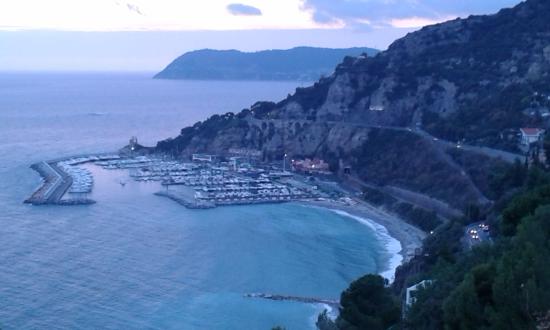It is one of the most historical and naturalistic trails of the most evocative of Liguria, easily walkable on foot and characterized by the colors and odors typical of the Mediterranean scrub. It is the ancient Via Iulia Augusta, built in the 13th c. at the will of the Emperor Augusto to connect Rome to the southern Gallia, via Vada Sabatia (today’s Vado Ligure) and the resort of Arles in Provence: a truly fascinating trait between the municipalities of Alassio and Albenga, whose first stage can not to be the little church of Santa Croce in Alassio, whose original building remains the apse and the left flank: from the square in front you can enjoy an extraordinary panorama, which, on clearer days, spends to the mountains of Tuscany and Corsica . After passing a stone arch, the images that accompany the entire path will appear immediately: the sea and Gallinara Island, so called by the Romans for the presence of wild hens. In the first section of the route you can admire the port of Alassio, with the characteristic Cappelletta erected in 1929 in memory of the fallen in the sea. A few hundred meters away you reach the church of Sant’Anna ai Monti, inside which are still visible parts of frescoes of the end of the 15th century / early sixteenth century, plastered after the Council of Trento. Continuing the walk for about 3 kilometers, past a campsite, in some short sections you still love the original Roman paved and a stretch of ancient pavement, characterized by the presence of margins on the sides and transverse cuts for the drainage of the waters. A little further, still in the commune of Alassio, are the remains of the necropolis of the Roman Albingaunum, dating back to the I-II sec. which accompany visitors until the end of the journey with a long series of interesting funerary monuments: the “A” and “B” buildings and a “colombary” tomb (the only one that has been found so far in Liguria). Leaving behind the funerary monuments, you reach S.Martino’s tip, near the “Pylon”, a tomb dating to the 2nd century AD. AD, and the Roman amphitheater. After a short descent, past the modern bridge over the Centa River, you reach Albenga with its historic center and medieval towers.
You may also be interested in:
https://www.fuoriporta.org/eventi/olioliva-imperia-im-13-14-e-15-novembre/
The news Itinerary www.fuoriporta.org
Follow us:
www.facebook.com/fuoriportaweb
www.instagram.com/fuoriportafortravel


